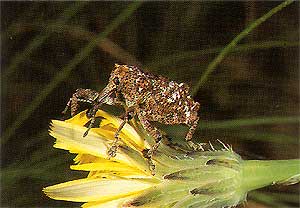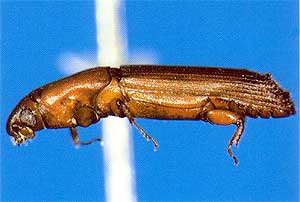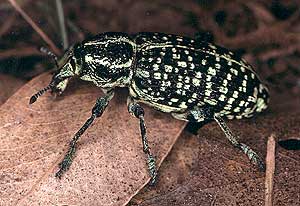
|
CURCULIONIDAE Weevils |
|
| ||||||||||||
|
This is the largest beetle family in Australia and members of this family are commonly known as weevils. Weevils are recognisable by having an elongated snout called a rostrum with their mouthparts contained at the end. The antennae are often clubbed and have a long scape, which gives them a distinct elbow. Weevils range in size from 1 to 60 millimetres in length, are mostly dull coloured and have a very hard body.
Both the adults and larvae of weevils are typically herbivorous, feeding on the roots, wood, fruit, bark, leaves and stems of a wide range of native and ornamental plants. Some weevils are pest species that attack stored products such as grains, flour, seeds and similar products. The larvae of weevils are C-shaped and legless and nearly all species stay concealed in the soil or within their food source until emerging as adults.
For more weevil species visit the Australian Insect Common Names - Curculionidae section found here. |


